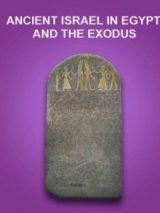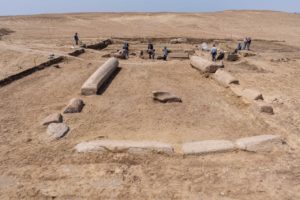New temple reveals religious pluralism in ancient Egypt
Nathan Steinmeyer May 02, 2022 0 Comments 700 views


Archaeologists excavate the Temple of Zeus in the Egyptian Sinai. Courtesy Egyptian Ministry of Tourism and Antiquities via Twitter.
As announced by Egypt’s Ministry of Tourism and Antiquities, archaeologists have uncovered the ruins of an ancient temple of Zeus Kasios at the site of Tell el-Farma in the Egyptian Sinai Peninsula. The discovery sheds further light on the religious multiculturalism that thrived in Egypt during antiquity. Zeus Kasios was an amalgamation of the Greek god Zeus and Mount Kasios (biblical Mount Zaphon) in Syria, the latter long revered as the home of the Canaanite god Ba’al and his sister Anat.


The temple of Zeus Kasios was uncovered at the archaeological site of Tell el-Farma, known in Roman times as Pelusius. The excavations focused on the temple’s entrance, where two collapsed, massive granite columns were visible on the surface. The temple was constructed out of mudbrick and set atop a raised platform with a marble-covered stairway leading into the temple. The temple ceiling was supported by massive columns of pink granite. Other architectural elements, including Corinthian capitals, were also found, many likely having been incorporated into later churches that were built at the site. In addition, several inscribed granite blocks indicate that the Roman Emperor Hadrian (r. 117–138 C.E.) supported renovations at the temple. The Egyptian archaeological team plans to perform a photogrammetric survey of the excavated blocks to aid in the reconstruction of this ancient temple of Zeus Kasios.


Excavations in the Egyptian Sinai. Courtesy Egyptian Ministry of Tourism and Antiquities via Twitter.
Although Zeus was the head of the Greek pantheon, he came to be associated with the ancient cult center at Kasios (modern Jebel al-Aqra) in Syria, which had long been an important religious center for Levantine religion when it was known as Mount Zaphon. Within Canaanite and Phoenician religions, Zaphon was the home of the god Ba’al. The mountain was so important that the Hebrew word for north, tsafon, is derived from the name of the mountain. In Greek mythology, the mountain was also the site where Zeus defeated the monster Typhon.


Large granite stone from the Temple of Zeus. Courtesy Egyptian Ministry of Tourism and Antiquities via Twitter.
The site of Tell el-Farma, in the northern Egyptian Sinai, dates back to the pharaonic period. It was a provincial capital under Roman rule and later a Christian spiritual center. The site was an important border stronghold and was strategically positioned to defend against invasions from the sea as well as those coming from the east. The city was almost invaded by the Assyrian king Sennacherib during his campaign to Judah in 701 B.C.E. and was the site of a pivotal battle between the Achaemenid Persians and Egyptians in 525.
Read more in Bible History Daily:
All-Access members, read more in the BAS Library:
Egyptian Papyrus Sheds New Light on Jewish History
Not a BAS Library or All-Access Member yet? Join today.

